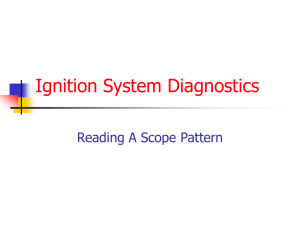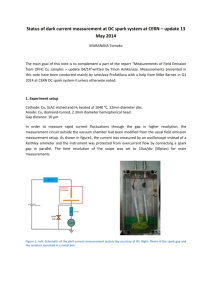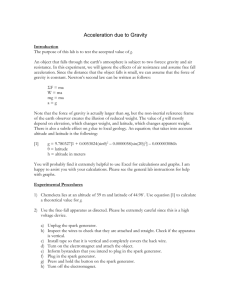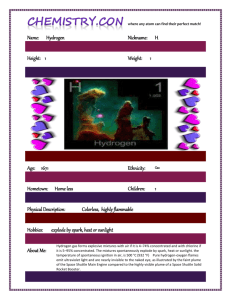Industrial Experience with SPARK PDF icon / 233k PDF Author
advertisement
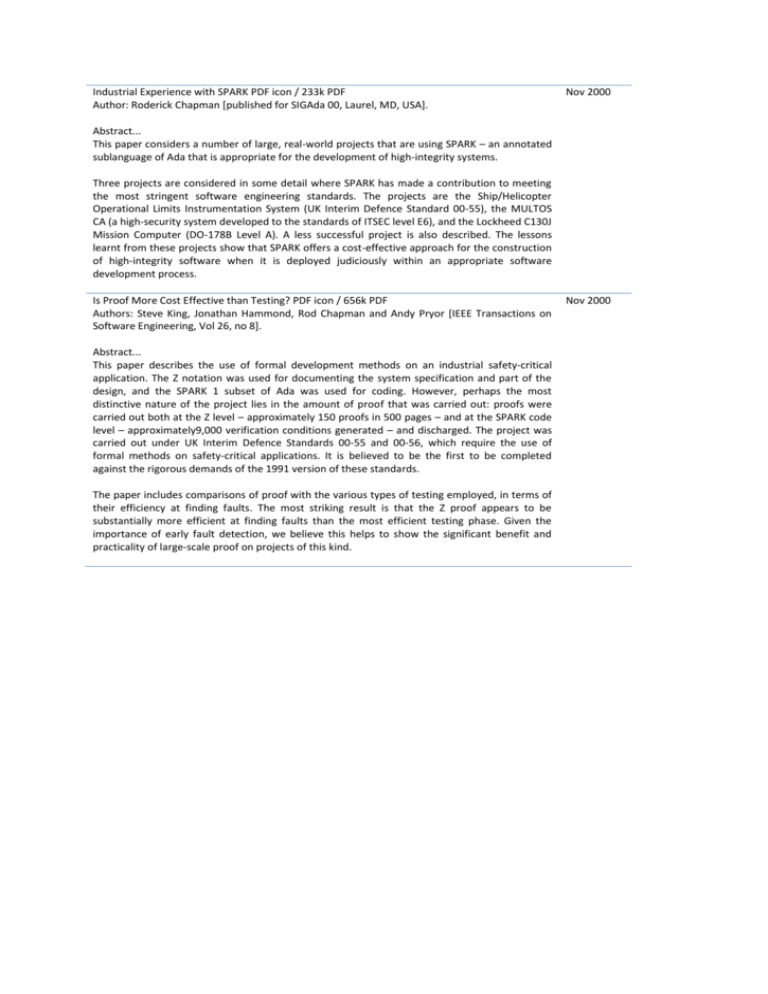
Industrial Experience with SPARK PDF icon / 233k PDF Author: Roderick Chapman [published for SIGAda 00, Laurel, MD, USA]. Nov 2000 Abstract... This paper considers a number of large, real-world projects that are using SPARK – an annotated sublanguage of Ada that is appropriate for the development of high-integrity systems. Three projects are considered in some detail where SPARK has made a contribution to meeting the most stringent software engineering standards. The projects are the Ship/Helicopter Operational Limits Instrumentation System (UK Interim Defence Standard 00-55), the MULTOS CA (a high-security system developed to the standards of ITSEC level E6), and the Lockheed C130J Mission Computer (DO-178B Level A). A less successful project is also described. The lessons learnt from these projects show that SPARK offers a cost-effective approach for the construction of high-integrity software when it is deployed judiciously within an appropriate software development process. Is Proof More Cost Effective than Testing? PDF icon / 656k PDF Authors: Steve King, Jonathan Hammond, Rod Chapman and Andy Pryor [IEEE Transactions on Software Engineering, Vol 26, no 8]. Abstract... This paper describes the use of formal development methods on an industrial safety-critical application. The Z notation was used for documenting the system specification and part of the design, and the SPARK 1 subset of Ada was used for coding. However, perhaps the most distinctive nature of the project lies in the amount of proof that was carried out: proofs were carried out both at the Z level – approximately 150 proofs in 500 pages – and at the SPARK code level – approximately9,000 verification conditions generated – and discharged. The project was carried out under UK Interim Defence Standards 00-55 and 00-56, which require the use of formal methods on safety-critical applications. It is believed to be the first to be completed against the rigorous demands of the 1991 version of these standards. The paper includes comparisons of proof with the various types of testing employed, in terms of their efficiency at finding faults. The most striking result is that the Z proof appears to be substantially more efficient at finding faults than the most efficient testing phase. Given the importance of early fault detection, we believe this helps to show the significant benefit and practicality of large-scale proof on projects of this kind. Nov 2000


